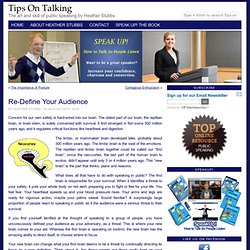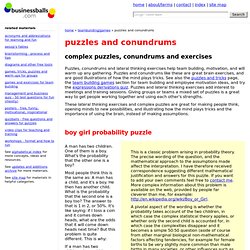

Liberating Structures - Introduction. Changing Challenges: My favourite coaching tools: Belbin's Team Roles. Caveats: Before I get into the details of the free Belbin Test: all my favourite coaching tools - free, online, or other - need to be applied with sensible and cautionary advice from statistician George EP Box: "all models are wrong, some are useful".

I discuss this principle with individual coachees, teams and team leaders this before giving them homework or some brief presentation on Belbin's Team Role theory. I also explain about the problems of labels, and how labels applied to people become truthes that get played out. (see Stephen R. Covey's The 7 Habits of Highly Effective People (UK) (or US) for further information) There are a number of ways to apply the Belbin Team Roles theory, which all provide shades of correctness.
ADDIE Model Explained. Anyone who is actively involved with instructional design has at some point used the ADDIE model (Analyze, Design, Develop, Implement, and Evaluate) for their course development.

This model is one of (if not the) most popular structures used by training designers today. As you can expect, it has received a lot of attention from the community – some criticizing it, others providing praise. Personally, I feel that ADDIE works just fine, and I have used a variation of it for years on my own projects. It’s actually quite interesting how passionate people are one way or another when it comes to this model. I think if you approach any training design and implementation with an understanding that it will have its own unique qualities, then you allow for a flexibility within the model road-map.
I suppose what I find missing from the method is a TESTING component – or, a dry-run after development. RSVP Design - Experiential Learning - RSVP Design RSVP Design. Team Building-Trainers Warehouse. Eagle's Flight Creative Training Excellence. Eagle's Flight - Australia Pty Ltd - Home. Re-Define Your Audience : Tips On Talking. Concern for our own safety is hard-wired into our brain.

The oldest part of our brain, the reptilian brain, or brain stem, is solely concerned with survival. It first emerged in fish some 500 million years ago, and it regulates critical functions like heartbeat and digestion. The limbic, or mammalian brain developed later, probably about 300 million years ago. The limbic brain is the seat of the emotions. The reptilian and limbic brain together could be called our “first brain”, since the neo-cortex, the last part of the human brain to evolve, didn’t appear until only 3 or 4 million years ago. What does all that have to do with speaking in public? If you find yourself terrified at the thought of speaking to a group of people, you have unconsciously defined your audience as your adversary, as a threat. Your new brain can change what your first brain deems to be a threat by continually directing its focus to a new definition. Initially, your first brain will object to the new definition.
All Brain Teasers. Free games, word games, tricks, puzzles, word puzzles, logic puzzles, motivational, team building, business games and warm ups for a party, meetings, conferences and training sessions. Home » teambuilding/games » puzzles and conundrums complex puzzles, conundrums and exercises Puzzles, conundrums and lateral thinking exercises help team building, motivation, and will warm up any gathering.

Puzzles and conundrums like these are great brain exercises, and are good illustrations of how the mind plays tricks. See also the puzzles and tricks page, the team building games section for team building and employee motivation ideas, and try the expressions derivations quiz. Puzzles and lateral thinking exercises add interest to meetings and training sessions. These lateral thinking exercises and complex puzzles are great for making people think, opening minds to new possibilities, and illustrating how the mind plays tricks and the importance of using the brain, instead of making assumptions. boy girl probability puzzle closed door probability puzzle (also known as the Monty Hall problem) Broadly the game show conundrum was: A contestant is shown three closed doors.
Explanation 1. The Scrum Ball Point Game - Tennis, anyone? You know when you're having trouble keeping all your balls in the air?

There's a game for that.. The scrum ball point game is a very popular lean game in scrum/agile programming circles, and it has nothing to do with pens. The rules are simple. Like most lean games, it depends on breaking people's preconceptions. The goal of the scrum ball point game is to pass as many balls as possible through your entire team in two minutes.
Scrum is a development method commonly used in software creation. The rules: 1. That's it. Boris Glogner, the creator of the scrum ball point game, maintains a blog with more information , or you can check out this direct link to the .pdf Often times, people will start off in a two lines and will adapt with each iteration and end up moving closer, which improves each team's flow. Here's a video of a massive group playing the scrum ball point game. Using training games. Be clear about the purpose of the game, particularly about the skills and behaviours that it is designed to develop.

Try to reduce any unnecessary “clutter” and extraneous rules that have no bearing on the development of the relevant skills. Provide a clear explanation to participants. This will probably include the aim of the game, any restraints or “rules”, the time available and hints about preferred strategies to adopt. It may also be appropriate to advise participants about how they might feel – especially where they are likely to experience frustration or conflict. (It is useful if the trainer has actually experienced the game as a participant.) Provide opportunity for reticent trainees to opt out or undertake a different role (as observer, monitor or assistant game administrator). Try to anticipate problems and difficulties, some of which can be minimised by including additional rules. Be flexible.